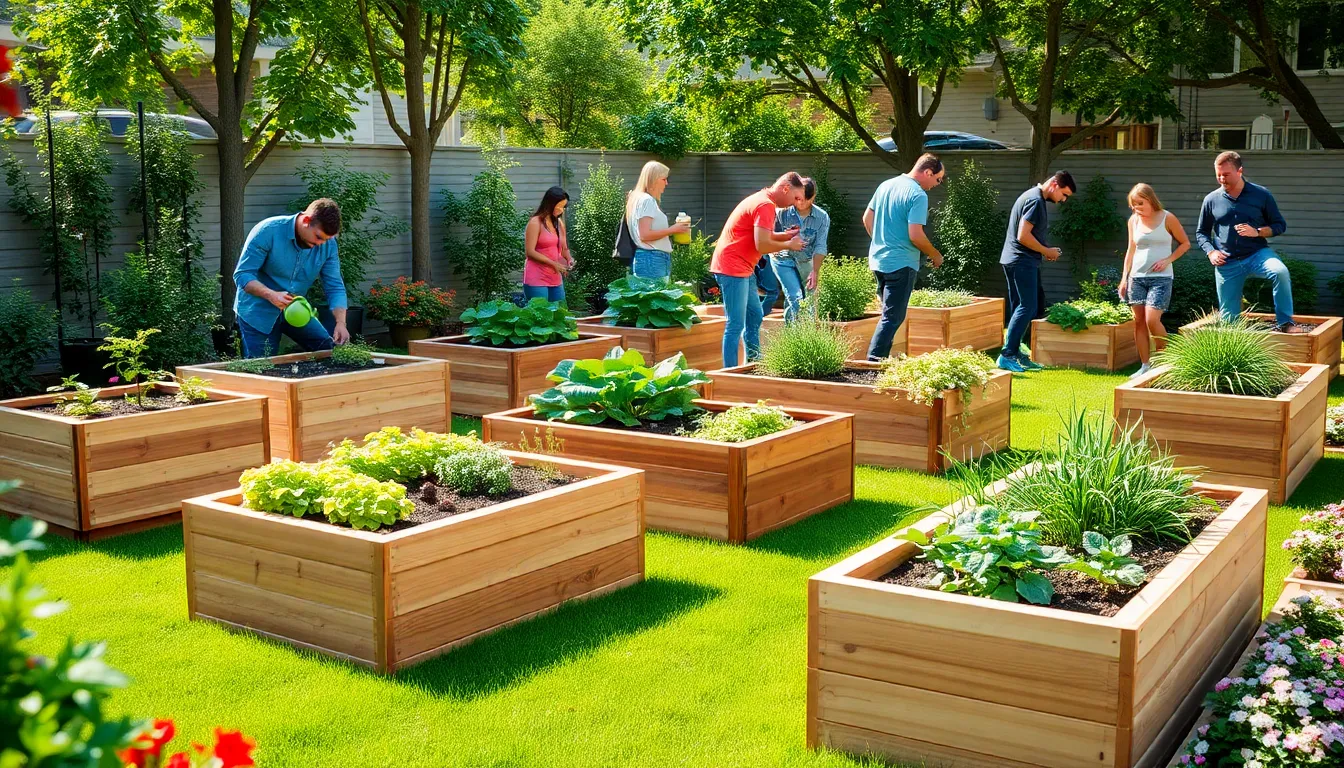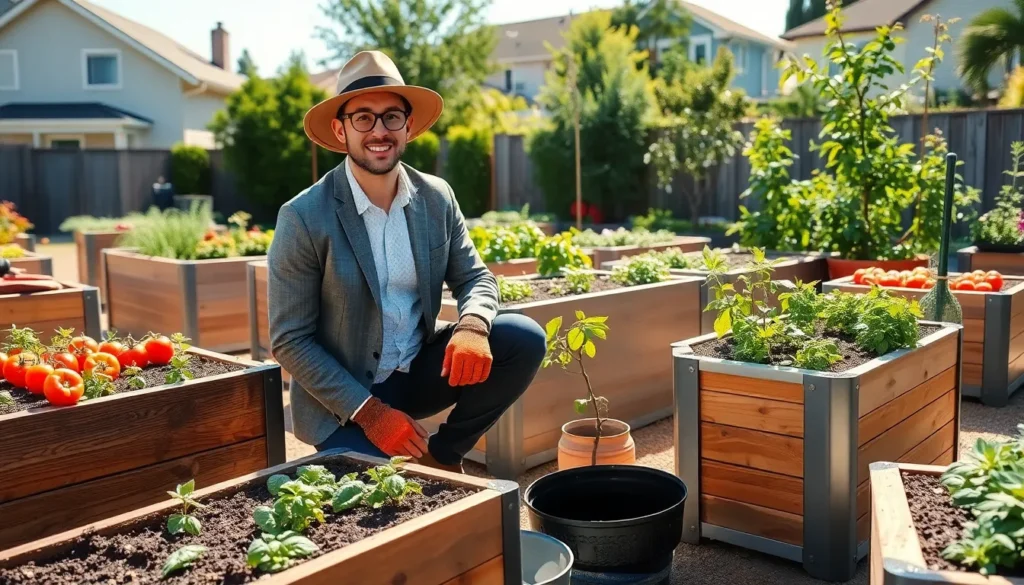Gardening boxes are not just a trend: they’re a game-changer for anyone looking to cultivate their green thumb without spending all day kneeling in the dirt. Imagine having a neatly organized garden right outside your door, where you can grow vibrant vegetables, fragrant herbs, and gorgeous flowers, all while elevating your gardening game to new heights. No backaches from bending over, and no need to navigate the minefield of pesky weeds. Get ready to explore why gardening boxes have become the secret weapon for gardeners everywhere.
Outdoor and Gardening

Gardening boxes, also called raised beds, bring a range of advantages to both amateur and seasoned gardeners.
Space Efficiency
For those whose outdoor space feels more cramped than cozy, gardening boxes maximize every inch. Positioning them in tight spots allows for optimal use of space, converting anything from balconies to small backyards into lush green havens.
Improved Soil Quality
Soil in traditional garden beds can be a mixed bag of rocks, clay, or even compacted earth. Gardening boxes let gardeners fill them with quality soil, tailored to their plants’ needs. Fluffy soil in a box means better drainage and healthier roots.
Easier Maintenance
Weeds? Not in a gardening box. With less area for weeds to invade, maintenance is much simpler. The defined boundaries of boxes make tasks like watering and harvesting straightforward, keeping your plants happy with minimal effort.
Accessibility
Gardening boxes can be built at a height that suits everyone, tall or short, seasoned gardener or novice. This feature reduces strain on the back and knees, ensuring everyone can enjoy a fulfilling gardening experience without discomfort.
Control over Pests
When you elevate your plants, pests are less likely to reach them. Plus, it becomes easier to monitor and act upon any pest problems before they escalate into a full-blown invasion.
Types of Gardening Boxes
Choosing the right type of gardening box can significantly influence your gardening success. Here are some popular options:
Raised Garden Beds
These are elevated boxes that sit directly on the ground. They offer great drainage while keeping soil loose and airy. They can be built from various materials, making them versatile to fit any style.
Container Gardens
Perfect for small spaces, container gardens allow planting in smaller, moveable pots. They’re not just practical: they can add visual appeal to any area while still being functional.
Vertical Gardening Boxes
When space is luxury, vertical gardening boxes come to the rescue. These innovative boxes allow for upward growth, making them perfect for growing vine plants like tomatoes and beans.
Hydroponic Boxes
Ideal for those looking to jump into soilless gardening, hydroponic boxes use nutrient-rich water instead of soil. This method can lead to faster growth and higher yields, taking gardening to another level.
Materials for Gardening Boxes
The materials chosen for gardening boxes play a pivotal role in their longevity and effectiveness.
Wood
Wooden boxes are a classic choice. Untreated cedar or redwood resists rot and provides natural beauty, with the added benefit of being relatively easy to work with.
Metal
Metal, such as galvanized steel, offers durability and a sleek look. It’s great for gardeners who want a modern aesthetic, but care should be taken to avoid overheating the soil during highs in temperature.
Plastic
Lightweight and rot-resistant, plastic gardening boxes come in a range of colors and sizes to fit any design preference. They may not have the same insulating properties as wood, but they’re easy to clean and maintain.
Stone or Concrete
For those looking for something more permanent, stone or concrete gardening boxes can be a bold statement. They last virtually forever and can be designed to fit any landscape.
How to Build Your Own Gardening Box
Creating a custom gardening box can be an enjoyable project that boosts your gardening experience. Follow these steps:
1. Gather Materials
Start with untreated wood (like cedar) or any other suitable material of your choice. You’ll also need soil, landscaping fabric, screws (or nails), and a drill.
2. Decide on Dimensions
Standard dimensions for a gardening box are 4 feet by 8 feet, but feel free to customize based on your space.
3. Construct the Box
Assemble the sides to form a rectangle or square. Pre-drill holes for the screws to prevent the wood from splitting. It’s smart to elevate the box a few inches off the ground to prevent rot.
4. Add Drainage
Line the bottom with landscaping fabric to minimize weeds while allowing water drainage. This keeps soil from washing away.
5. Fill with Soil
Use a mix of topsoil, compost, and vermiculite or peat moss to fill the box. This mixture provides a nutrient-rich environment for your plants to thrive.
Plants That Thrive in Gardening Boxes
Gardening boxes can accommodate a diverse range of plants. Here are a few favorites:
Vegetables
Tomatoes, carrots, and lettuce are all excellent choices for gardening boxes. They adapt well to the contained environment and generally produce abundant yields.
Herbs
Basil, rosemary, and cilantro thrive in gardening boxes, providing fresh flavors for your cooking while being compact enough for smaller spaces.
Flowers
If aesthetics are a priority, consider planting marigolds, zinnias, or petunias. They not only beautify your garden but can also attract pollinators.
Succulents
For those who prefer low-maintenance options, succulents thrive in gardening boxes and offer unique textures and colors, making them visually stunning additions.
Maintenance Tips for Gardening Boxes
To keep your gardening boxes in tip-top shape, consider the following tips:
Regular Watering
Because raised beds tend to dry out faster, monitor moisture levels closely. Water deeply, ensuring the soil is evenly moist but not soggy.
Fertilize
Add nutrients regularly, especially during planting and mid-season. A balanced fertilizer can help your plants reach their full potential.
Pest Control
Keep an eye on your plants for any signs of pests or disease. A quick inspection can save you from losing an entire crop.
Seasonal Care
In the off-season, consider using covers to protect your gardening boxes and soil. Rotation of crops each year can also help maintain soil quality.
